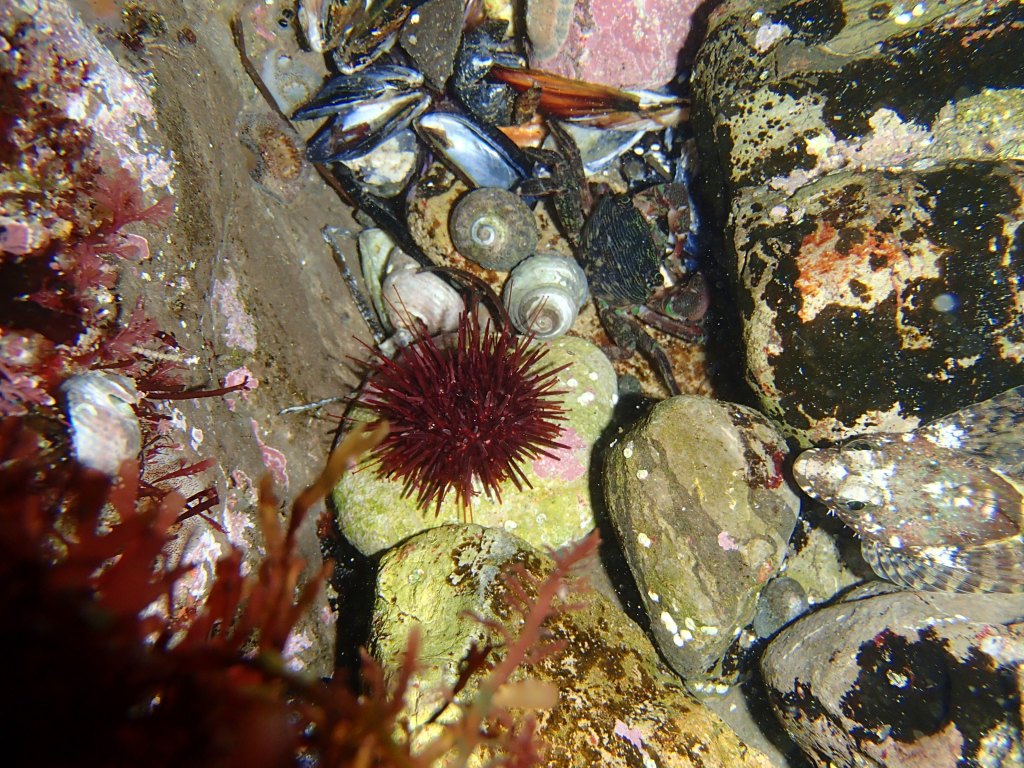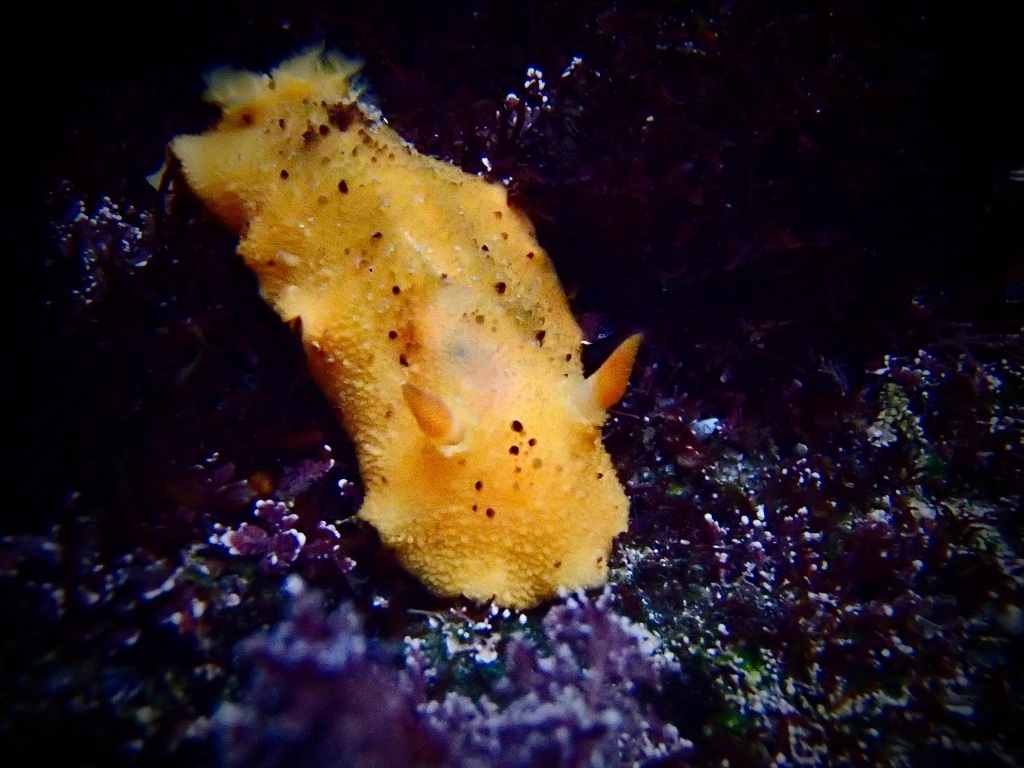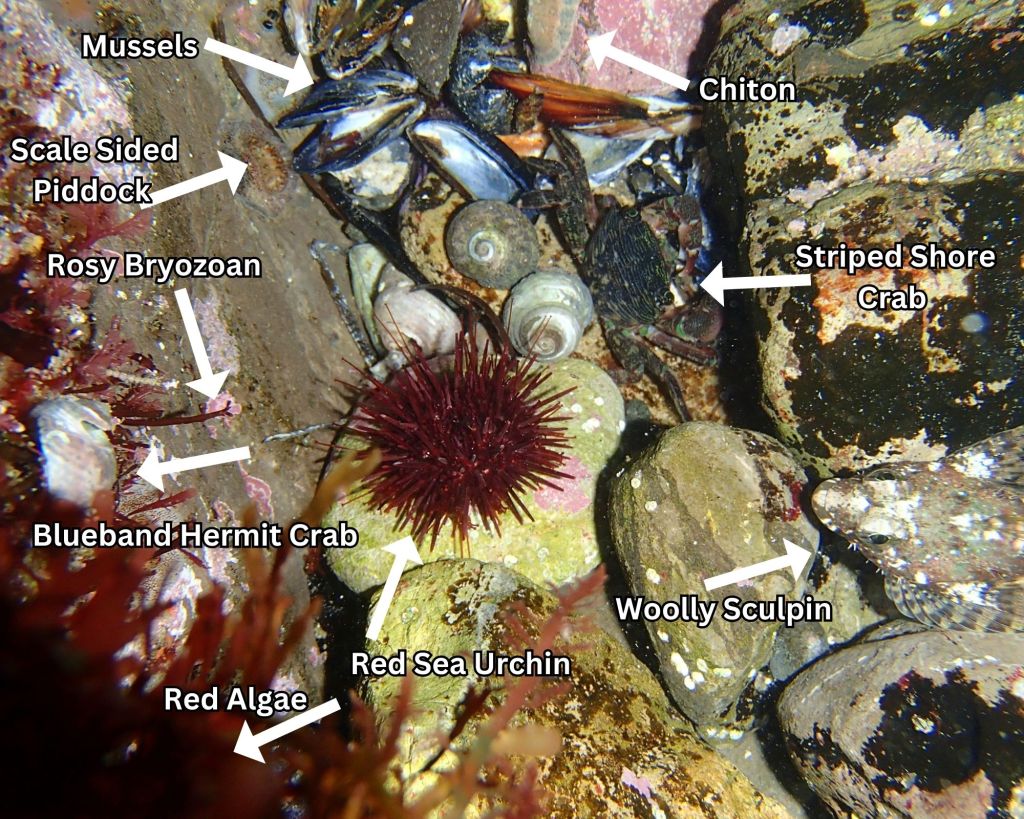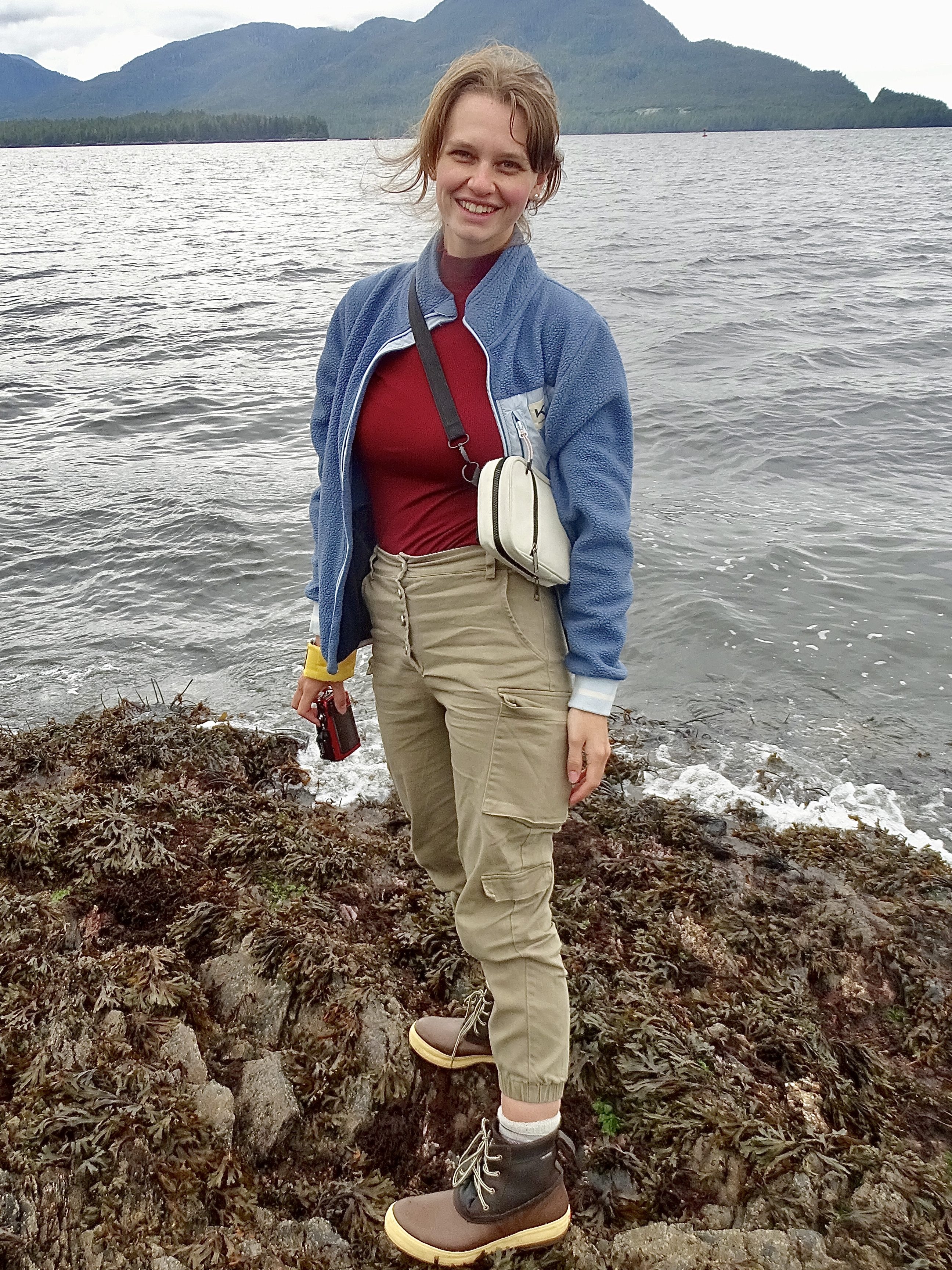A Lesson in Density and Diversity From a Red Sea Urchin

This is one of my favorite images I’ve take while tide pooling. Now before you say, “Kassidy, you’ve taken lots of better images than that,” hear my out.
When I was first getting into avid tide pooling, I wasn’t very confident visiting the tide pools after dark. But one night when there was a good low tide, my mom and I ran down to Corona Del Mar to with our headlamps for a nighttime tide pooling adventure. I wasn’t on the rocks for two minutes before I saw the largest nudibranch I had ever seen— this Monterey Dorid, right out in the open. It was nearly four inches long and a lifer for me. I knew it would be a good night.

As the dusk faded to darkness, we still scoured the rocks. A few other avid tide poolers were about and one found a giant feather duster worm we were all excited to see.
I couldn’t see hardly anything outside the circle of light my headlamp cast when we decided it was time to leave. I took one last sweep of the pools around me when I spied another nocturnal creature rarely seen during the day: a red sea urchin.
Pacific purple sea urchins are very common on the Southern California coastline and dot the tide pools with their brilliant violet coloration and spines. But the red sea urchin is less commonly observed, and I had never seen one before. This one had its tube feet extended into the water and was ambling quickly (for a sea urchin) across the rocks. My mom was already heading toward the sand, but I snapped a few shots with my camera before heading to join her.
That night, I went back to edit my photos. I was relieved the shots of the red urchin had turned out because I had take them so quickly and my camera at the time didn’t have a great flash. But the images were sharp.

It was only after I finished editing that I began to notice just what I had taken a picture of. The urchin, of course, was what I was focusing on, but I began seeing other organisms in the wide photo that I hadn’t noticed that night.
The camouflaged woolly sculpin. The striped shore crab resting on mussel shells. The hermit crab feeding. A chiton clinging to the rock. The siphon of a scale sided piddock. Red algae in the foreground. Rosy bryozoan encrusting the substrate.

There were so many organisms in this single image that can’t have captured more than more than 8 inches of tide pool substrate. How many did you notice when you first saw this photo at the beginning of this post? A couple? None but the sea urchin?
What this image shows is one of my favorite aspects of the tide pools. So much of the ocean is a vast wasteland of millions of cubic feet of water containing (almost) nothing. Some have even said the Sahara Desert would look like a lush garden, full of life and nutrients, compared to the endless nothingness that is the open ocean.
But the ocean has many pockets where life is bursting at its seams. Coral reefs are often thought of as the epitome of diversity in the seas. But if coral reefs have the most diversity overall, I would propose that tide pool ecosystems have the most density of diversity.
Every rock, shell, and stone is smothered in life at the tide pools. Make sure to look closely so you don’t miss any of it.

Categories
tags
Subscribe to the blog
Sign up to receive weekly emails with tide pooling information and guides so you never miss a post!

Leave a comment